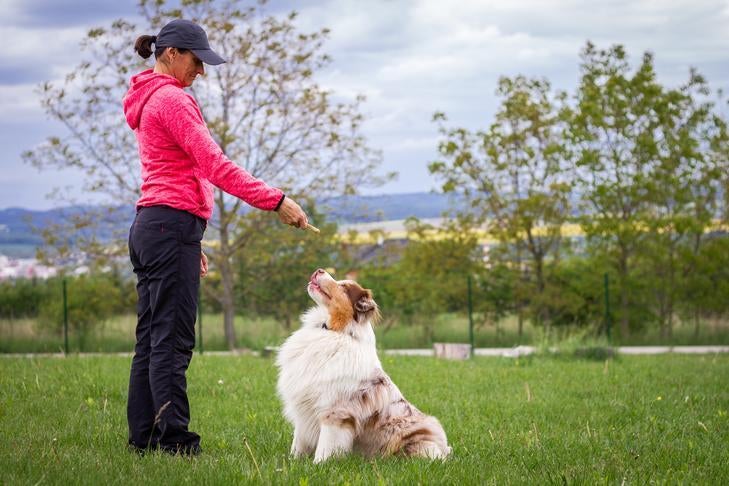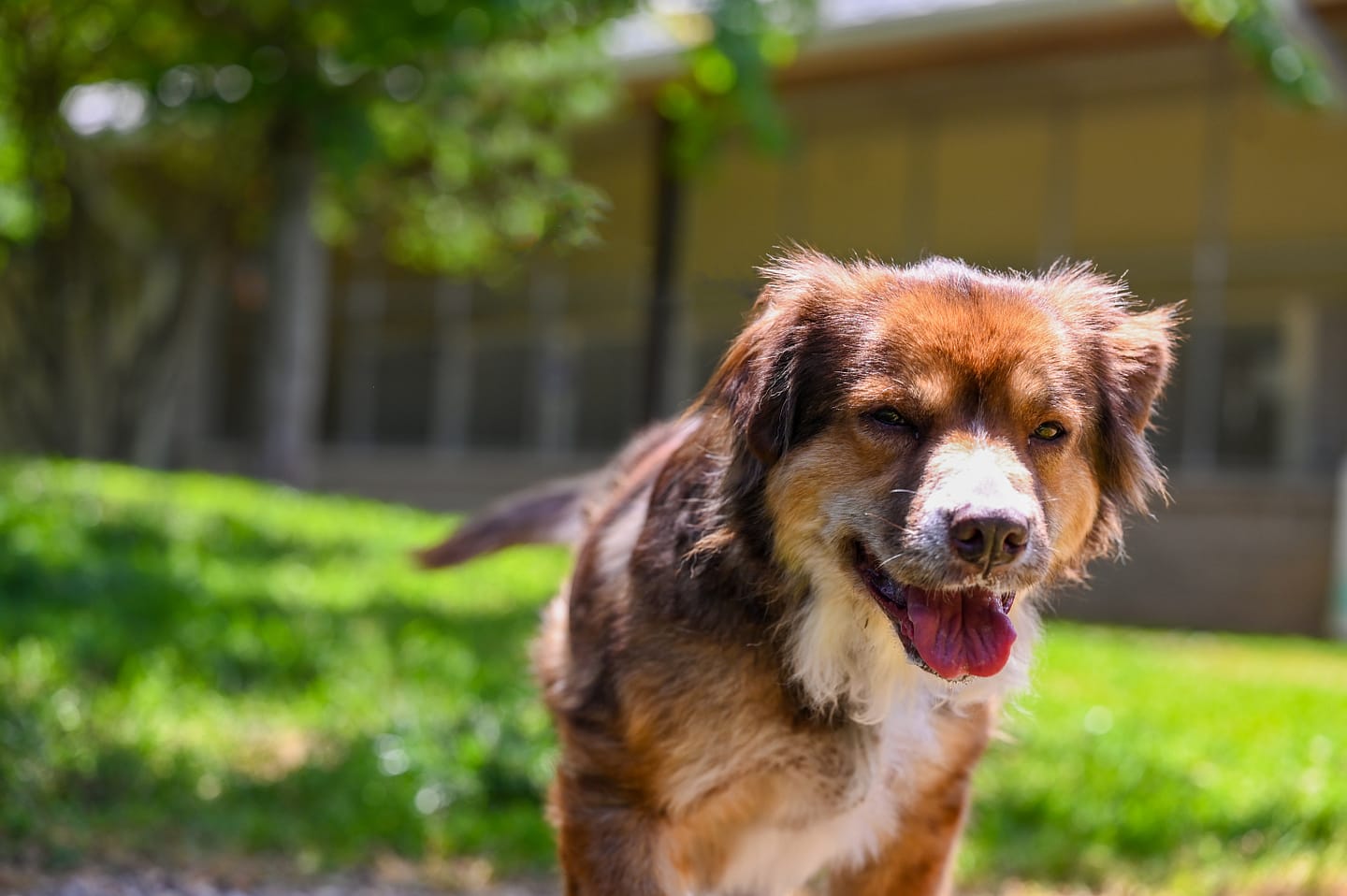The Ultimate Overview to Positive Reinforcement in Dog Training
The Ultimate Overview to Positive Reinforcement in Dog Training
Blog Article
Essential Tips for Successful Dog Training: A Guide for Pet Dog Owners
Effective pet training is a diverse procedure that requires a calculated method customized to both the pet dog's personality and the proprietor's goals. Recognizing how to navigate these barriers can substantially enhance the training experience, ultimately changing the partnership in between proprietor and canine.
Recognizing Dog Habits
Comprehending dog actions is necessary for effective training and fostering an unified connection in between dogs and their proprietors. Canines communicate mostly through body language, articulations, and activities, making it critical for proprietors to analyze these signals accurately. Recognizing a pet's stance, tail position, and ear alignment can offer understandings right into its emotional state. For example, a wagging tail does not constantly suggest joy; it can likewise indicate enjoyment or stress and anxiety.

Socialization plays a significant duty in dog actions; direct exposure to different settings, individuals, and various other animals can significantly impact a pet dog's character. Elements such as type features and private personality should guide training approaches, as some types might have certain behavior attributes that require tailored strategies. By comprehending these components, owners can produce a helpful environment that encourages favorable behavior, leading to successful training end results and a deeper bond with their animals.
Establishing Regular Commands
Efficient communication with your dog begins with developing constant commands. This foundational component of training is critical for cultivating understanding in between you and your pet dog. Uniformity in the commands you make use of makes sure that your pet can reliably connect specific words or expressions with the wanted habits.
When choosing commands, pick clear, unique words that are simple to state and differentiate from one an additional. Avoid utilizing similar-sounding commands that may perplex your dog. Making use of "sit" and "remain" is suitable, however "sit" and "struck" could lead to misunderstandings.
Furthermore, maintain the same tone and quantity for every command. Canines are delicate to singing signs, so differing your tone can produce confusion.
It is just as crucial to make certain that all member of the family get on the exact same page regarding the commands utilized. A united front in command usage will avoid combined signals and strengthen the discovering process.
Favorable Reinforcement Strategies
The power of positive reinforcement in canine training lies in its capacity to urge preferred behaviors through rewards and appreciation. This technique is based in the concept that behaviors complied with by favorable end results are most likely to be repeated. By including favorable support into your training program, you can successfully shape your pet's habits in a constructive manner.
To implement positive reinforcement, it's important to determine what encourages your canine, whether it be deals with, toys, or spoken praise. When original site your canine does a preferred action, such as remaining on command, immediately compensate them with a treat or affection. This association between the command and the favorable result strengthens their understanding.
It's vital to timing the benefits appropriately; supplying the support within seconds of the wanted behavior assists your dog make the link (dog training). Additionally, consistency is essential-- guarantee that all member of the family use the same commands and incentive systems to prevent confusion

Progressively, you can reduce the regularity of treats as your canine finds out the actions, transitioning to commend or periodic benefits. This method not just cultivates a solid bond in between you and your pet however likewise promotes a positive discovering environment, making training a satisfying experience for both.
Socialization and Communication
Constantly exposing your pet to a selection of settings, people, and other pets is critical for their social development. Socialization needs to start early, ideally throughout the essential window of 3 to 14 weeks, when puppies are most responsive to new experiences. Older dogs can also profit from continuous socialization efforts.
Present your canine to various settings, such as parks, pet-friendly stores, and metropolitan locations. This direct exposure helps them adapt to various stimulations, lowering anxiousness and anxiety feedbacks. Urge favorable communications with various other canines and people, guaranteeing that these encounters are controlled and secure to promote confidence.
Use structured playdates with genteel pet dogs, as this can enhance your canine's social skills and teach them proper actions. click to read more Obedience classes and training sessions likewise provide superb opportunities for socializing, permitting your pet to communicate with others in a supervised setting.
Monitor your canine's body language during interactions, as this will certainly help you determine their convenience degree. Gradually raise direct exposure to more tough situations while guaranteeing that each experience declares. A well-socialized dog is much more likely to exhibit well balanced habits, making them a pleasure to have in any setup.
Addressing Usual Training Difficulties
Every pet owner will come across training challenges eventually, no matter their canine's age or socializing level. Identifying typical concerns such as stubbornness, distractions, and terror can help in developing efficient strategies for improvement.

Diversions during training sessions can hinder emphasis. To battle this, start training in a quiet environment with minimal stimulations. Progressively introduce interruptions as the canine ends up being extra skillful in commands. Short, frequent training sessions are likewise reliable in keeping focus.
Terror can prevent a pet dog's knowing process. Progressive desensitization to the resource of anxiety, coupled with positive support, can help reduce anxiousness. Persistence is critical; never ever force a pet dog into a circumstance that triggers distress, as this might intensify the problem.
Eventually, understanding and attending to these common challenges with an organized method will certainly promote a much more productive training experience, enhancing the bond between pet and proprietor while promoting effective understanding.
Final Thought
In summary, successful dog training relies upon a thorough understanding of canine actions, the facility of constant commands, and the application of favorable support methods. Socialization plays an important duty in creating well-adjusted pet dogs, while addressing usual training difficulties calls for patience and adaptability. By applying these crucial methods, pet owners can promote a solid bond with their pet dogs and advertise preferable habits, eventually causing a harmonious connection between people and their canine buddies.
Understanding canine actions is necessary for site here effective training and promoting a harmonious partnership in between pooches and their proprietors.Socialization plays a significant role in pet dog actions; exposure to numerous settings, individuals, and various other pets can considerably influence a dog's personality.The power of favorable reinforcement in pet training lies in its capacity to encourage wanted habits with incentives and appreciation. By integrating favorable support into your training regimen, you can effectively shape your pet dog's actions in a positive manner.
In recap, successful pet training relies on a comprehensive understanding of canine actions, the facility of constant commands, and the application of favorable support techniques.
Report this page